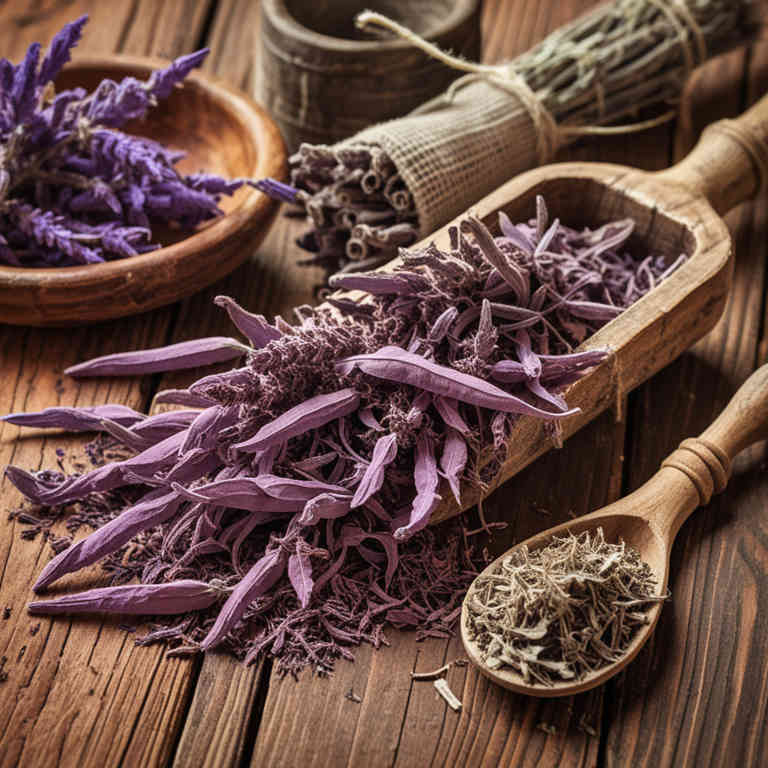Salvia miltiorrhiza decoction for medicinal use

Salvia miltiorrhiza decoction is a traditional herbal preparation made by boiling the roots of the Salvia miltiorrhiza plant, also known as Chinese red sage.
This decoction is widely used in traditional Chinese medicine for its purported ability to improve circulation, reduce inflammation, and support cardiovascular health. It is often prescribed to treat conditions such as coronary artery disease, hypertension, and peripheral vascular disorders. The active compounds in the decoction, including tanshinones and salvianolic acids, are believed to contribute to its therapeutic effects.
In herbalism, it is also used to promote blood health and may be incorporated into formulations for stress relief and cognitive enhancement.
Uses
Salvia miltiorrhiza decoction has been used to promote blood circulation and treat cardiovascular conditions in traditional Chinese medicine for centuries.
Historically, it was valued for its ability to alleviate symptoms of blood stasis, such as pain and swelling, and was commonly used in treating wounds and menstrual disorders. In modern times, scientific research has identified compounds like tanshinone and salvianolic acid that may contribute to its anti-inflammatory and antioxidant properties. Today, it is often used as a complementary therapy for heart disease, stroke prevention, and circulatory disorders.
Its continued use reflects both its historical significance and its potential in contemporary herbal medicine.
Benefits
Salvia miltiorrhiza decoction has health benefits such as improving circulation, reducing inflammation, and supporting heart health.
It is traditionally used in Chinese medicine to treat conditions like cardiovascular disease and diabetes. The decoction contains active compounds like tanshinone and salvianolic acid, which have antioxidant and anti-inflammatory properties. It may also help in preventing blood clot formation and enhancing oxygen delivery to tissues.
This herbal preparation is often prescribed to promote overall cardiovascular wellness and aid in the management of chronic inflammatory disorders.
Constituents
Salvia miltiorrhiza decoction active constituents include tanshinone IIA, cryptotanshinone, and salvianolic acid B.
These compounds are known for their antioxidant, anti-inflammatory, and vasodilatory properties. Tanshinone IIA has been studied for its potential in improving cardiovascular health and reducing oxidative stress. Cryptotanshinone exhibits neuroprotective effects and may support cognitive function.
Salvianolic acid B contributes to the decoction's ability to promote blood circulation and reduce inflammation in the body.
Preparation
To make Salvia miltiorrhiza decoction, first gather 15-30 grams of dried Salvia miltiorrhiza root, depending on the desired potency.
Wash the root thoroughly and chop it into small pieces to increase surface area for better extraction. Place the chopped root in a pot and add approximately 1 liter of water. Bring the mixture to a boil, then reduce the heat and let it simmer for 20-30 minutes.
Strain the liquid through a fine mesh or cheesecloth to remove the plant material, and allow the decoction to cool before use.
Side Effects
Salvia miltiorrhiza decoction may lead to gastrointestinal discomfort, including nausea, vomiting, and diarrhea, in some individuals.
It can also cause allergic reactions such as skin rashes or itching, particularly in people sensitive to the plant's compounds. Prolonged use may result in liver toxicity, as some studies suggest it can affect hepatic function. There is also a risk of bleeding disorders due to its potential anticoagulant properties.
It is important to consult a healthcare professional before using this preparation, especially for those with pre-existing medical conditions or taking other medications.